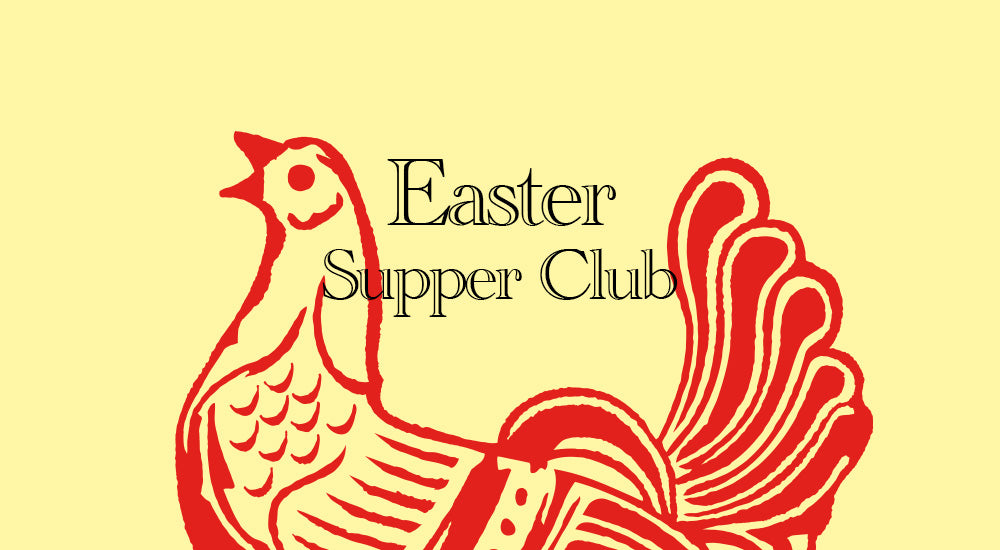Once a bigger event than Christmas and the highlight of the year, Easter has always been a time for family, friends, feasting ad tradition. So this year we celebrated with our first Makers & Merchants Easter Supper Club at Plum Tree Farm.
We wanted to celebrate the season and create a contemporary welcoming display of seasonal flowers, cook a homemade feast and display flowers, fruit and vegetables on a backdrop of spring colour.
To give a dramatic focus to the table we chose to buck the norm and used artist Bela Silva's amazing sculptural range of Look at Me planters as a giant vase, creating an amazing spring centrepiece filled with tulips. Our Easter feast was presented on a colourful backdrop of spring colour with Ottolenghi's FEAST range of tableware and drinkware, a bright uplifting colour pallet perfect for the season. Accessorised with Sergio Herman's Surface cutlery and highlights of fashion designer Ann Demeulemeester's Dora glassware. With dashes of colour dotted down the table, our Hand-painted colourful pots were planted with seasonal daffodils. Lots of fun was had by all.


Traditional Easter delicacies
Easter and Lent have always been an important part of the Christian calendar with this Christian celebration inspiring a variety of culinary delights.
Under the early Church, Lent was a time of traditional fasting before a great celebratory feast ensued at Easter. Apart from cabbage, Easter tended to fall during a time in the annual calendar when there was little variety of fresh grown produce and so once Lent ended it became a time to enjoy meat (roast lamb being the firm favourite as new spring lambs would appear around Easter), eggs and sweet confectionary. All in short supply over Lent and expensive treats year round.
As well as historically being amongst one of the only fresh items available for the Easter table, eggs have taken on many guises over time and across nations.
Historically a sign of fertility and rebirth and symbolising the resurrection of Christ, eggs became entwined with Easter and in modern times the chocolate egg (and now also the Lindt bunny) has for a long time been at the forefront of the celebrations. The chocolate egg was born at the end of the 19th century, with technology able to produce its smooth outer shell that nowadays is adorned with all kinds of elaborate and personalised decorations. Easter without them was and still is unthinkable.
The tradition of the Easter egg hunt began in Germany with the Easter hare or rabbit who bought painted eggs for children. Now predominantly made from chocolate the game is still played today with eggs hidden under bushes around gardens across the country.
Bakeries have long created shaped breads and cakes studded with fruit, nuts and spices, some sprinkled with sugar in the shape of doves, lambs, rabbits and some simply plaited. But hot cross buns seem to remain the favourite in Britain, dating back to Medieval times, the cross was once slashed into the dough instead of piped on top.
Simnel Cake was associated with the day people would make a pilgrimage to their 'mother' church. Known as Mothering Sunday, this is the source of the modern Mother's Day and had nothing to do with mothers at all.
Today the feasting extends into all manner of delicacies and with the addition of a long bank holiday, which is often sunny, extends the feasting in to four days of indulgence and relaxing with loved ones. It's no wonder that Easter became and still is the highlight of the year for many.

